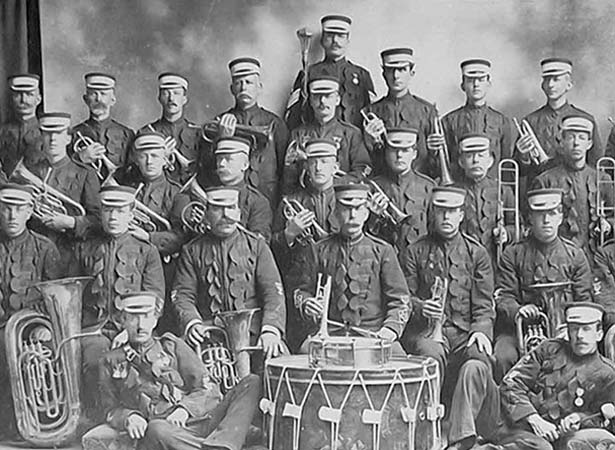
About 2500 people attended the first inter-city brass band competition in the Christchurch Drill Hall. After six bands played, the audience chose the winner – the Invercargill Garrison Band, under the command of Captain W.E. Heywood.
Heywood was one of the pioneers of the brass band movement in New Zealand, which had military origins. From the 1840s the bands of the imperial regiments based in the colony provided music for state and civic occasions, vice-regal balls and public concerts. The traditions established by these imperial bands were continued by their Militia and Volunteer counterparts. The band of the Taranaki Volunteer Rifles, formed in 1859, is believed to have been the first of these.
In the decades after the New Zealand Wars, many military bands were replaced by community bands associated with organisations such as fire brigades, factories and trade unions. For many years almost every township had a band which could be relied upon to parade on the flimsiest pretext. These bands came to symbolise local pride and identity.
Brass bands in New Zealand – as elsewhere – have been described as ‘the working man’s symphony orchestra’. A good example is the Woolston Brass Band, which was formed in May 1883 and came to represent the strong working-class identity of the Christchurch suburb. In the 20th century Woolston became the centre of New Zealand’s rubber products industry. For several decades the band was named after its major sponsor, rubber manufacturing firm Skellerup Industries Ltd.
The military traditions of brass bands in New Zealand are continued today by the popular and versatile Royal New Zealand Air Force Band, New Zealand Army Band and Royal New Zealand Navy Band.
How to cite this page
'First inter-city brass band contest', URL: https://nzhistory.govt.nz/page/first-inter-city-brass-band-contest, (Ministry for Culture and Heritage), updated 20-Oct-2020
